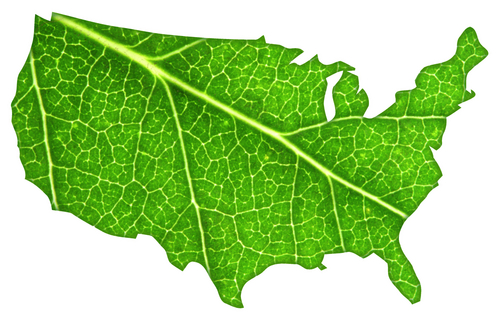 |
Today we look at state responsibilities and tomorrow we will look closer at the measures states can (and already are) using to realize their goals.
Of all the words associated with climate change, “carbon” stands out as the most ubiquitous, and among the nation’s carbon sources, fossil fuel-fired power plants rank number one. On June 2, 2014, the EPA proposed its Clean Power Plan to cut carbon emissions from such power plants from 2016 through 2030.
The Plan is the result of considerable input from diverse stakeholders providing the EPA with information that ultimately showed states were already on top of such efforts as renewable energy and energy efficiency.
As a result, the EPA proposed to continue the states’ leadership, giving them flexibility to make necessary decisions while meeting the goals established under President Obama’s Climate Action Plan. If all goes well, the Plan is expected to lower electricity bills by eight percent in 2030, cut smog- and soot-causing pollutants by more than 25 percent, and avoid up to 6,600 premature deaths and 150,000 asthma attacks in children. Cumulatively, the EPA estimates the climate and health benefits could reach as much as $93 billion in 2030.
Join us on August 27 for a practical look at the scientific and technological aspects of the many new changes for power plants and other facilities under Section 316(b) led by a top expert in the field. Register now.
Essentially, the Clean Power Plan creates a partnership between states and the EPA, with the EPA setting goals and the states choosing the best and most cost-effective means of reaching them. This is an important aspect when considering states have different energy needs, utilities and emissions. The “state goal” approach meets the Clean Air Act (CAA) requirement that the EPA identify the “best system of emission reduction…adequately demonstrated” and establish guidelines for states to achieve reductions that reflect the system. Those are the goals, but the states then have the flexibility to decide on a plan to achieve them.
The EPA identified four “building blocks” or sets of measures already in use that together comprise the best system for reducing carbon pollution. These building blocks recognize the connected nature of the power sector as well as cost-effective and proven solutions already utilized by many states such as demand-side efficiency programs now used by 47 states, renewable portfolio standards or goals implemented in 38 states, and market-based greenhouse gas programs used by 10 states.
Using the historical data about emissions and the power sector, the EPA created a consistent national formula for reductions that applies the building blocks to state-specific information and provides a “carbon intensity rate” for each individual state. The four building blocks are:
|
Building Block |
Value Allocated in Goal-Setting Formula |
|
Average heat rate improvement of 6% for coal steam electric generating units (EGUs). |
|
Dispatch to existing and under-construction natural gas combined cycle (NGCC) units to up to 70% capacity factor |
|
Dispatch to new clean generation, including new nuclear generation under construction, moderate deployment of new renewable generation, and continued use of existing nuclear generation |
|
Increase demand-side energy efficiency to 1.5% annually |
Join us for an in-depth presentation on new EPA regulations for existing cooling water intakes. This webinar will provide an overview of the regulations, and how to ensure these requirements are conducted and completed on time.Register now.
States will also have the option of converting the rate-based goal to a massed-based goal and can create state-only plans or multi-state plans to meet their goals. Notably, Vermont and Washington D.C. are not included in the rule because they have no fossil fuel-fired power plants. Four affected sources in Indian Country will be addressed separately by the EPA and the tribes.
